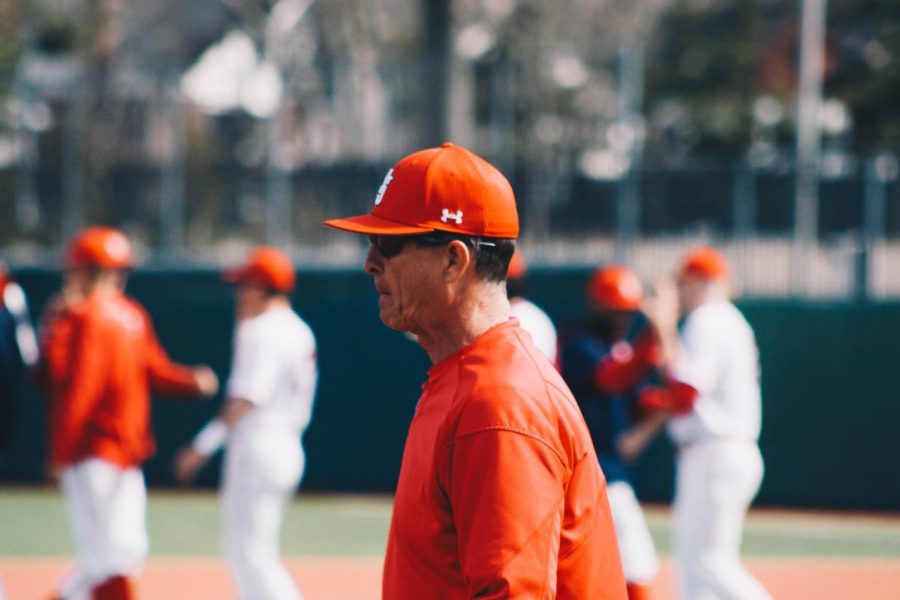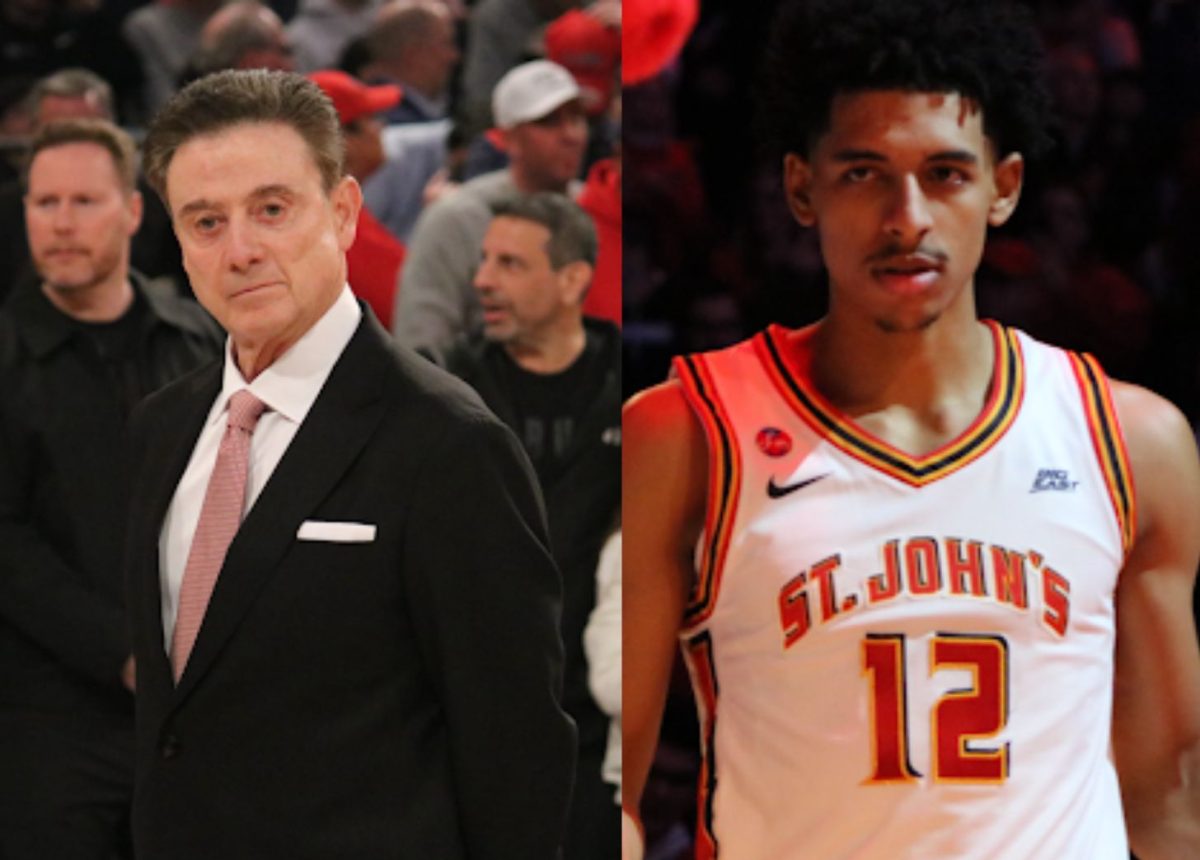Much like the weather outside, mid-winter in the baseball world usually means a halt to all life. Transactions and changes are curtailed for the pageantry of a new season, as was on display late last month when St. John’s put on its annual Bullpen Winter Banquet.
But behind the masquerade, there was some disruption to the usual January monotony. In fact, one needed to look no further than the stage in the Edison Ballroom to see a familiar face in an unfamiliar role.
After 24 years as head coach of the Red Storm, Ed Blankmeyer stepped down to take a position in the New York Mets organization on Jan. 6. With less than six weeks to the start of the season, St. John’s stayed in-house and named longtime assistant and recruiting coordinator Mike Hampton the interim head coach on Jan. 9.
It is a coaching change in name and title, but it doesn’t come with the cultural and philosophical overhaul that one might expect from a regular transition. Hampton had worked with Blankmeyer since the start of the millennium, shaping the rosters that the recently departed head coach led to more than 1,300 wins.
“It doesn’t mean I throw my stamp on it,” Hampton said of his new role. “We’ve done things, for the last almost twenty years since I’ve been here, a certain way and we’ve had a lot of success.”
“If it ain’t broke, don’t fix it,” he added.
“He knows what to do,” Blankmeyer said. “I just handed off the keys to the car, so to speak.”
Stability has been the focus during the transition. Blankmeyer expressed his hope that the school would retain his coaching staff, including pitching coach George Brown and assistant coach Danny Bethea, Hampton said. Both will stick around, and Bethea was promoted from a volunteer to a full-time assistant.
If not for cohesion, staff holdover was important for a roster that thought it was going to play for Blankmeyer. Upending everything the team worked on in the fall with a new regime weeks before first pitch would have backed players into a corner. While their options would have been limited, some might have felt betrayed if administration looked more to make a splash with an external hire than support the roster. Instead they have the support of the same voices that
“I think that the younger players were a little bit more surprised than the older kids,” Hampton said. “But I think that the transition has been fairly simple. I’ve been here.”
“I think knowing the players and what they can and can’t do, seeing how they’ve developed over the years is important in decision-making,” he added.
What happens after this year is still unclear. Hampton is the head coach on an interim basis convinced them to come to St. John’s in the first place. The university promised to conduct a “thorough national search of both internal and external candidates” in the same press release that named him successor. Fair or not, it makes this season something of an audition for the full-time gig.
“I don’t think about it,” he said. “My job as an assistant and my job as head coach is to win as many games as possible.”
“Whatever happens, happens,” he added.
Settling into a new role of his own, Blankmeyer expressed confidence in the direction of his old program. He had been approached by professional teams before, but his foray into the professional ranks was in part contingent on leaving the Red Storm in good hands.
“Change was necessary,” he said. “I wanted to do something like this for a while. I wanted to get my family’s blessing. I wanted to make sure the program at St. John’s is strong, which I know it is.”
“I wanted the challenge,” he added.
Blankmeyer sees his role as primarily developmental. He will first work in Florida at extended spring training before coming north in the summer to manage the short season single-A Brooklyn Cyclones.
Some of the players he has in extended spring ball will come with him to Brooklyn. But he’ll also receive new draftees, getting their first taste of professional baseball. While he might see a player in extended spring for a couple of months, those from the draft have hardly any time at all to not only adjust to minor league life, but carve out their spot on a roster.
“What you do is try to get as much information as you possibly can from the scouts that have drafted them,” he said. “Then you plug them in according to what the organization wants to do with them.”
“It’s a collaboration,” he added.
While he might cede some control to organization highrollers, the core of his team will remain the same. Blankmeyer stresses development first and foremost, but not at the expense of success as a team.
“You’re looking to play good baseball,” he said. “You play good baseball, a lot of the times it translates to winning baseball.”
Excited as he is about the future, he said the people, administrators, coaches and players alike, are what he will miss most about St. John’s. Luckily, campus is just a strenuous drive (or a very long subway ride) away. Blankmeyer has already been in regular contact with his successor.
“He’s always going to be a Johnnie himself,” Hampton said. “He’s only a phone call away. We’re always going to be friends and stay in touch.”








